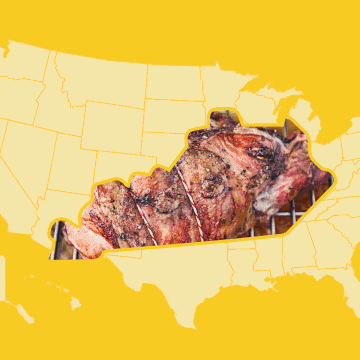Tomato sauce is an absolutely essential ingredient for some very delicious recipes. What’s a homemade pizza without red sauce? How about a heaping bowl of classic spaghetti and meatballs? And don’t even think about making lasagna or eggplant Parm without tomato sauce.
But what happens when you throw open the doors of your pantry to find the tomato sauce stash completely depleted? Deep breaths. Here’s how to substitute when you're out of the red stuff.
What is tomato sauce?
At its most basic, tomato sauce is a tomato puree with salt, spices, and oil. “If it's in a glass jar, there's probably a lot of oil to start,” Delish Senior Food Producer June Xie said. “If you buy marinara, there’s some sugar in there to make it taste really good. And there are spice mixes.”
“When you're using [the following] substitutes,” she continued. “It's all up to you to understand what you want out of that substitute and just try to wrangle your spices into place to make it work.”
Can you just make your own tomato sauce?
Sure! If you have the right ingredients. A lot of the substitutions below cover how to take a tomato-y ingredient and add other things to conjure a sauce.
“You need some sort of fat. Extra virgin olive oil is always a good go-to,” Xie said. “For me, onion is not necessary, but garlic is a non-negotiable in tomato sauce. Some sort of fresh or high-quality dried herbs to give it that perfume quality.” Of course, canned or fresh tomatoes are also key ingredients. Here is a spaghetti sauce recipe and a marinara sauce recipe to get you started.
“And I always add a teaspoon to a tablespoon of sugar,” she continued. “Whether the tomatoes are canned or fresh, if they are not in season, they are not really sweet. Sugar can really make it pop.”
What can I substitute for tomato sauce?
Tomato paste
“I think of tomato paste as the garlic powder equivalent to fresh garlic,” Xie said, noting that it's highly concentrated and very dehydrated. “It doesn't have a lot of juiciness left in it, but it does have the core umami flavor.” She recommends frying tomato paste in some olive oil with diced onions, thinning the mixture out with a bit of water to get that saucy consistency.
“You have a less textured, way more smooth tomato sauce,” she continued. “You could even try adding in a squeeze of lemon juice to kind of brighten it up.”
Canned tomatoes
“Canned tomatoes are basically tomato sauce waiting to happen,” Xie said. “There are two different kinds of tomato sauces you can make with canned tomatoes—cooked and uncooked.” The cooked version is your basic sauce—sautéed onions in oil combined with canned tomatoes, then cooked down. The uncooked version is crushed canned tomatoes with freshly grated garlic and some olive oil. “That is great for pizza,” she said.
Tomato soup
“If we're talking Campbell's, it's very concentrated, and it's also got a lot of sugar in it,” Xie said. “Usually it comes with high-fructose corn syrup, which is almost very cloying [in flavor]. So you have to be careful what application you use it in.”
Xie suggests diluting the mixture with a little heavy cream to make a pink sauce or use a little of it to replicate a Chef Boyardee-like sauce. “You can try to balance it out with a lot of crushed red chili pepper to give it that sweet and spicy hit,” she said.
Ketchup
“There's a Filipino fast food chain called Jollibee's,” Xie said. “One of their specialty sides is spaghetti that straight-up tastes like it was made with ketchup. If you can open your mind up to that flavor potential, it's actually quite addictive.” Try watering it down and mixing in herbs and spices for a light sauce, or only using a small amount for a drier sauce.
Fresh tomato
“Just cut them up and then crush them in a food processor,” Xie said. “Cook it down or have it fresh. But if it's not in season, adding a little bit of sugar and salt is the way to pick up that flavor.”
Sun-dried tomatoes
“I highly recommend keeping the ones that are packed in oil on hand,” Xie said. “If you're looking for it to substitute as tomato sauce, you'll need to start cooking it down in some water or chicken broth until it's a little bit more rehydrated.” Then, blend it up into a paste, add garlic, olive oil, salt, and sugar.
The takeaway? Don't panic when the tomato sauce runs out, substitute!












